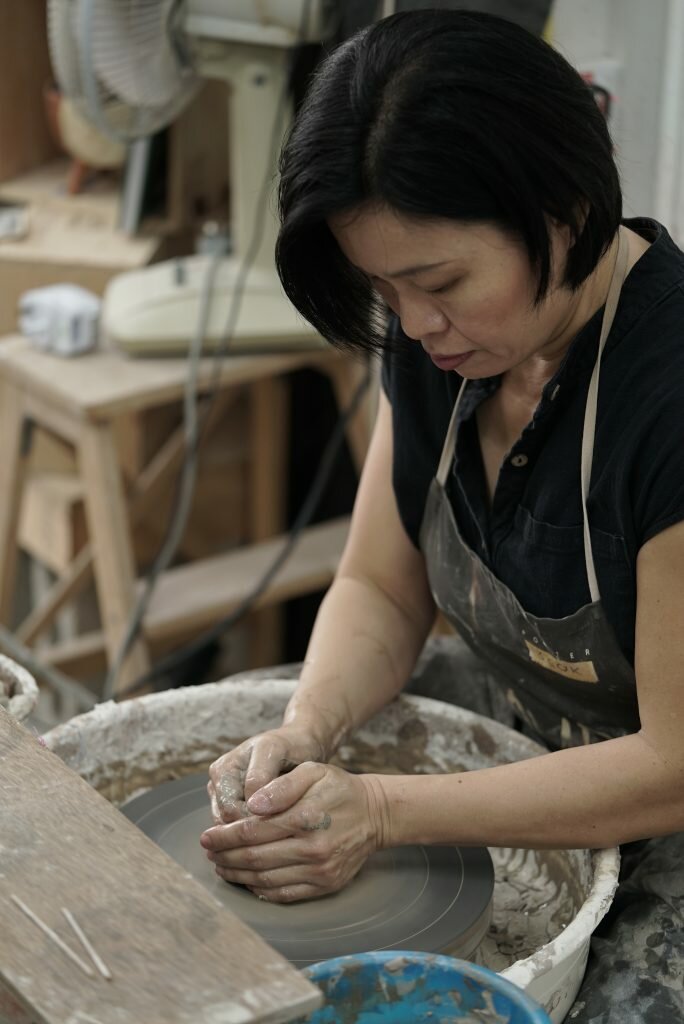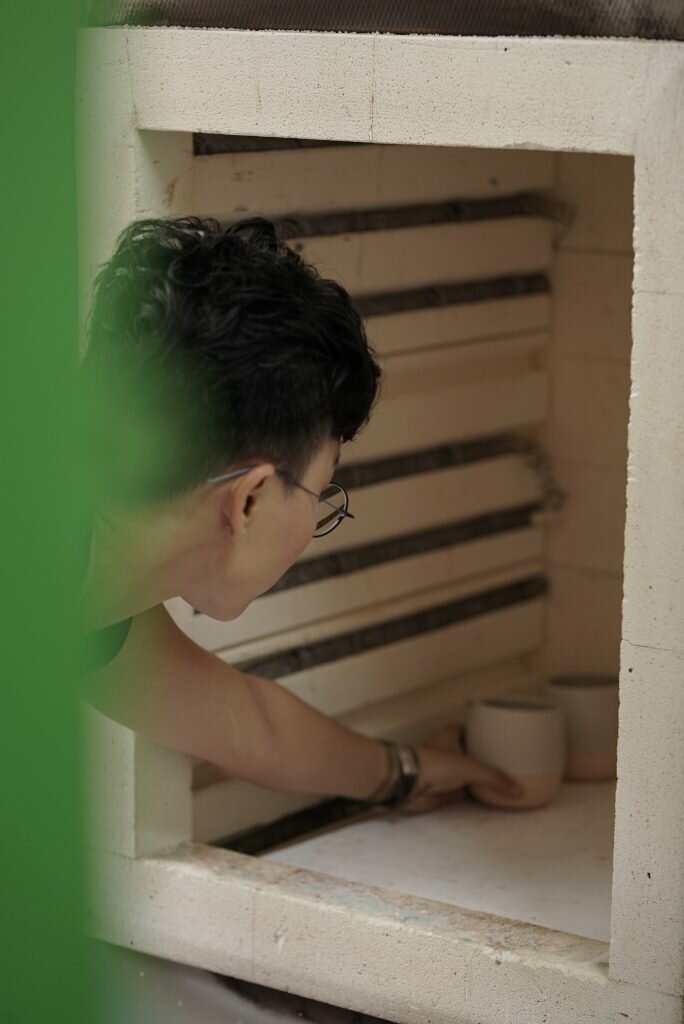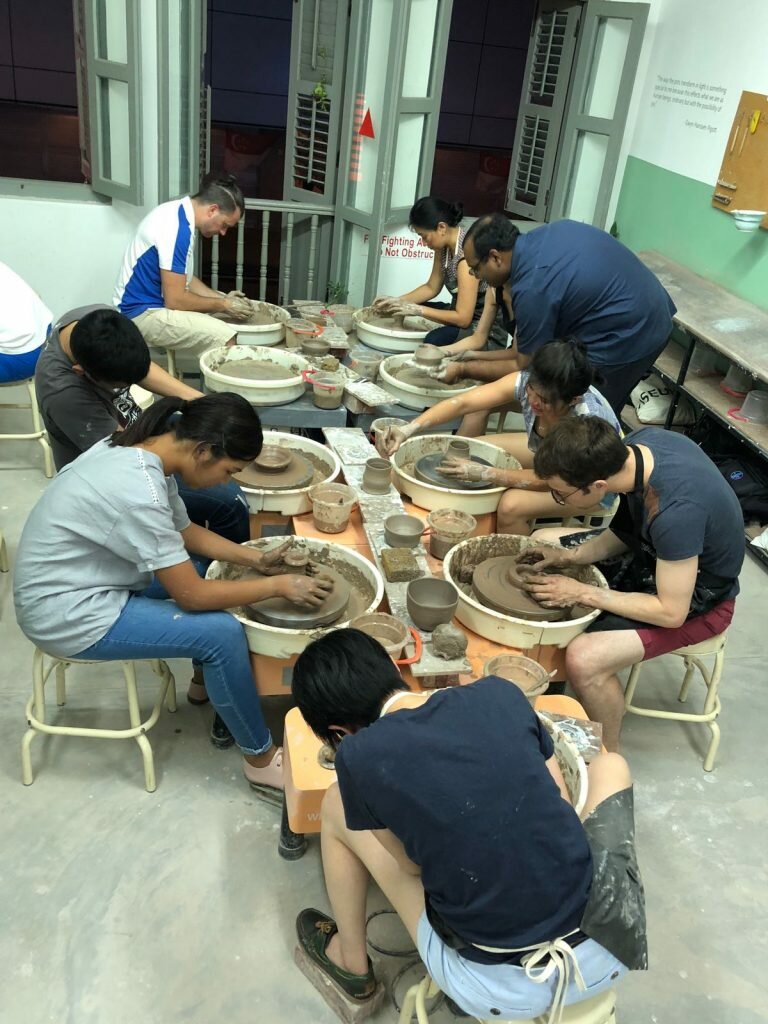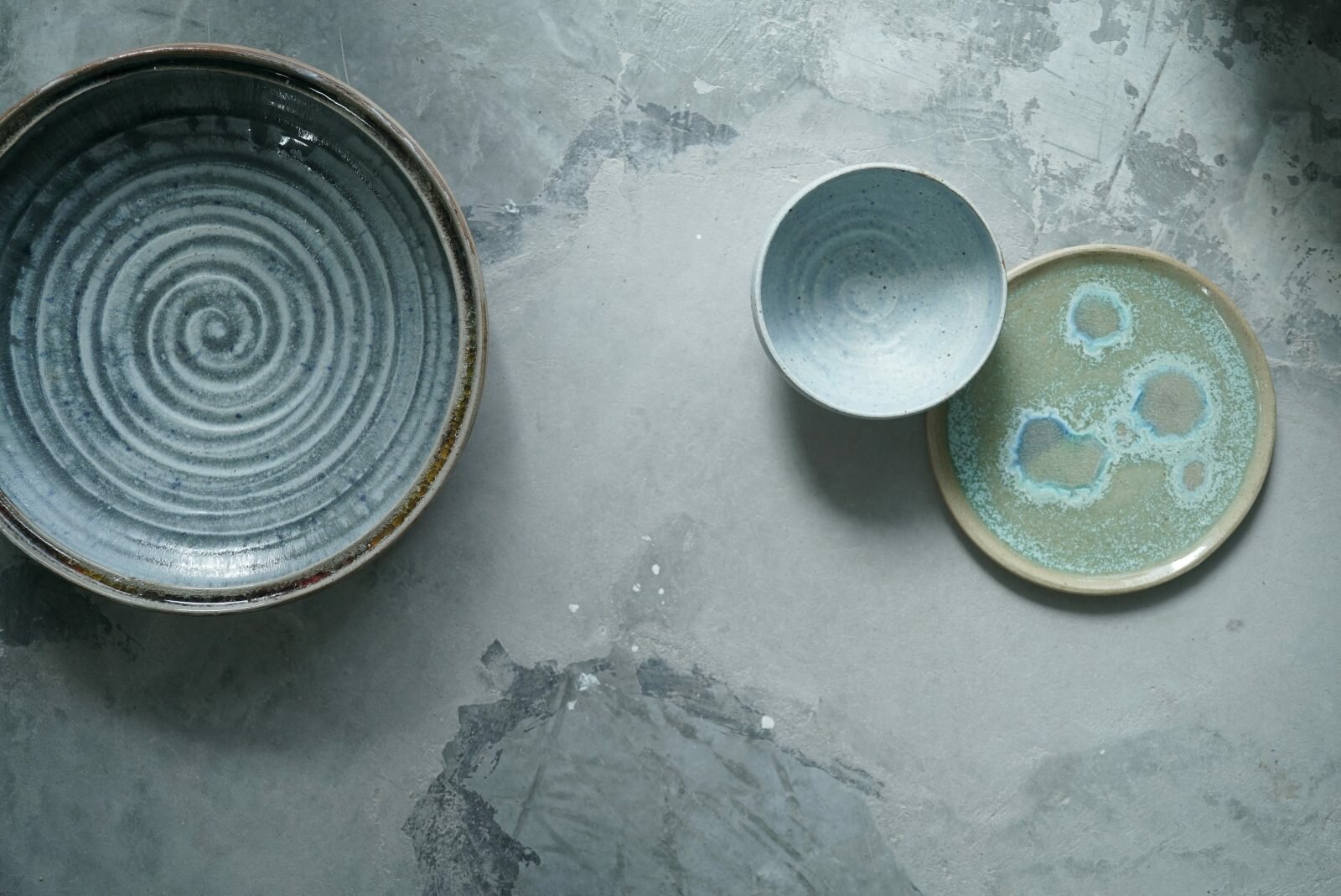These days, handmade crafts seem to be experiencing a renaissance of sorts. Luxury brands emphasizing the value of their couture and métier d’art artisans more than ever, museums are beginning to focus more on crafts, and homebound people the world over are beginning to discover the wonders of everything handmade, from knitting to toymaking. Amidst all of this, however, are the professional craftspeople who have been quietly plugging away in their respective disciplines for years now, long before crafts accumulated their newfound cultural capital.
For Michelle Lim and Ng Seok Har of Mud Rock Ceramics, ceramics are not an unapproachable form of high art, but neither are they mere hobbycrafts that children pick up and put down on a whim. “In between, people forget that the plates that they eat out of, the cups that they drink from, the tiles that they walk on are all ceramics,” says Lim.
Part of Mud Rock’s mission, therefore, was to remind people of that fact, that the everyday objects that we use do can be more than just carbon copies that come out of a faraway factory; they can be made right here in Singapore — in Jalan Besar, to be exact — and you can have a direct human connection with the person who made your morning coffee cup.
From This Land
The idea of being able to call up your local potter to make a new set of plates for your home, or a new mug to bring to the office will likely be novel for most Singaporeans, but it was probably not an entirely foreign idea for older generations.
“Actually, Singapore has a very rich culture in ceramics,” says Lim “but it was only overseas that I learned about Singapore’s dragon kilns.” Dragon kilns are long, snaking tunnels where local potters would fire pottery at temperatures up to 1,300 degrees. Although there were once tens of such kilns built by immigrants from China in the last century, they have almost all been demolished — only one still remains in Jalan Bahar.
It was at a festival celebrating the dragon kilns that Lim and Ng met and started discussing the craft gap that was missing in Singapore — the one between hobbycraft and high art. They would go on to decide that they would be the ones to fill that gap with Mud Rock.

“We want to be the local potter that the family or restaurant can go to and order from,” Ng recalls. “We wanted to instill that pride of locally handmade ceramics and functional ware, and have people appreciate that the cup that they drink Milo from or the plate that they eat out of is made from this land,” Lim adds.
In Every Singaporean Home
In creating Mud Rock with the express mission of getting handmade ceramics into people’s homes, Lim and Ng both understood that that meant a lot of hard work lay ahead — not because it meant convincing people of the value of a handmade piece of ceramic ware before such appreciation hit the mainstream, but because the duo also wanted to keep their ceramics affordable. “We set out to be approachable and affordable so that even a student who is saving up $20 or $30 can afford a handmade mug, and not see it as something only the rich can afford,” Lim asserted.
“But for that to happen,” Ng added, “we knew we would have to work really hard because we would be making hundreds of them.”
Making hundreds of mugs, plates, and pots often meant working 16-hour days in the early years of Mud Rock. Part of that reason is how time- and labour-intensive ceramics is. To get from raw clay to a finished product takes approximately eight different steps over the duration of two weeks.

Clay is first kneaded, wedged, and weighed before being taken to the pottery wheel to be thrown — “like that sexy scene in Ghost” — where the wheel spins and the clay is shaped according to the ceramicist’s intentions. After throwing, the clay is left to dry to a medium-dry stage called leather hard before it is trimmed on a wheel to remove excess material. The clay is then left to dry again until it reaches bone dryness, where the clay is brittle and there is almost no moisture left. Once it reaches this stage, it is fired for the first time in a kiln at a temperature between 100 to 1000 degrees Celcius in a process called bisque firing, which turns the clay into ceramics. That piece of bisqueware is then glazed using a solution of water and various minerals — either by dipping, painting, or spraying — and fired again for a second time at about 1,300 degrees to create the final finished piece.
The process is long and requires constant checking of items in various stages of completion — stepping away from the clay for too long might mean, for instance, that it becomes too dry to be trimmed, and so the process cannot continue.
-

Ng throwing a mug -

Lim trimming a mug -

Dipping a bisque ware mug into glaze. -

Placing mugs into the kiln.
Lim and Ng acknowledge that their craft requires a lot of discipline, hard work, and also plenty of economising in order to keep their products affordable.
For example, “we make glazes from scratch using raw minerals because they’re cheaper,” Lim says, “and that also sets us apart because it means you cannot get our glazes anywhere else.”
The alchemic mixing of minerals to create glazes involves more chemistry than can be easily explained but suffice to say that the process involves a lot of precise measurements and applications to ensure consistent results.
That isn’t to say, however, that mistakes do not sometimes arise — although the duo is remarkably sanguine about those instances. When everything is handmade and natural, they say, you have to accept what comes out of the kiln, even if it is not what was intended. The two have also reached a point in their craft where such mistakes help to inject freshness into their work.
“Sometimes, you open the kiln and see something extremely wonderful, but it was not what you originally intended,” Ng muses. “Then you start panicking because you don’t know what you missed in your recipe to get that wonderful result.”
“Sometimes,” says Lim, “you realise that the mistake is better than the original idea.”

Fit For A Queen
Mud Rock’s commitment to handmade production has led them to be the platemaker of choice for many families, hipster cafes, and restaurants alike, including Meta, Morsels, Le Bon Funk, Alma, Restaurant Lerouy, and Nouri, just to name a few.
Their most significant commission, however, came in 2016, when Mud Rock was commissioned to create a tea set by the Singapore president — not for the Istana, but for Buckingham Palace. The tea set was to be a gift for Queen Elizabeth II’s 90th birthday.
“It was the biggest honour, something we’ll never forget. We worked day and night, because we were so scared that we’ll screw up.”
The duo suggested creating a tea set because it was a culture that both the United Kingdom and Singapore share. The set was also decorated with flora and fauna from Singapore, including a tembusu tree that Queen Elizabeth II herself planted, and the Dendrobium orchid that was named after her.

Since then, the duo have also received commissions from the Bhutanese royal family, as well as numerous regular families all around Singapore. Their brand of thoughtful craftsmanship extends not just to items that are intended for VVIPs, but for everyone that the duo creates for — commissions are all given the same consideration.
“Even if you just have two family members, and want a pair of coffee mugs, we’re happy to do that.”
“A family was renovating their house once,” Ng recalls, “and we made everything down to the soap dishes and toothpick holders and vases for the mother and different daughters.” Every mug was made with a slightly different form, so that each member of the family could easily identify which was theirs in the morning even before they had their coffee.
Future Tense
In Singapore, choosing a life as a craftsperson is an unusual one. But arguably, if we want to create a vibrant creative community in the future, then that is a choice that more people must be allowed and encouraged to make. Lim and Ng both came to clay differently, with Lim choosing to do her degree in ceramics after exploring many other craft mediums, and Ng falling in love with clay after over 10 years spent in banking.
Both acknowledge that the future of their craft lies in training other people. “We’re limited by space and resources — and resources also include people.” Lim admits. “We need to train people in this craft, and educate them on the seriousness of it, the discipline, not just the sexy romantic stuff, but the chemistry, the heavy lifting, and all that.”
-

-

Mud Rock hosts a Clay Commune to encourage people to practice their pottery skills and build community at the same time.

“And that is with a goal in mind to grow production, handmade production further in Singapore. So that that’s something we still dream of because I think at this rate, still not everyone can afford or can have handmade ceramics accessible in their homes.”
But if handmade craft continues to be valued as part of people’s everyday lives, then maybe one day that will change.
In regular times, Mud Rock hosts pottery classes for people to learn more about ceramics, and also hosts a Clay Commune where experienced students and potters can practice their craft. Find out more about Mud Rock Ceramics at mudrockceramics.com.
This is the second story in The Makers series, where we explore the many home-grown artisanal products and crafts that are quietly enriching Singapore’s cultural landscape. For more in this series, click here.


